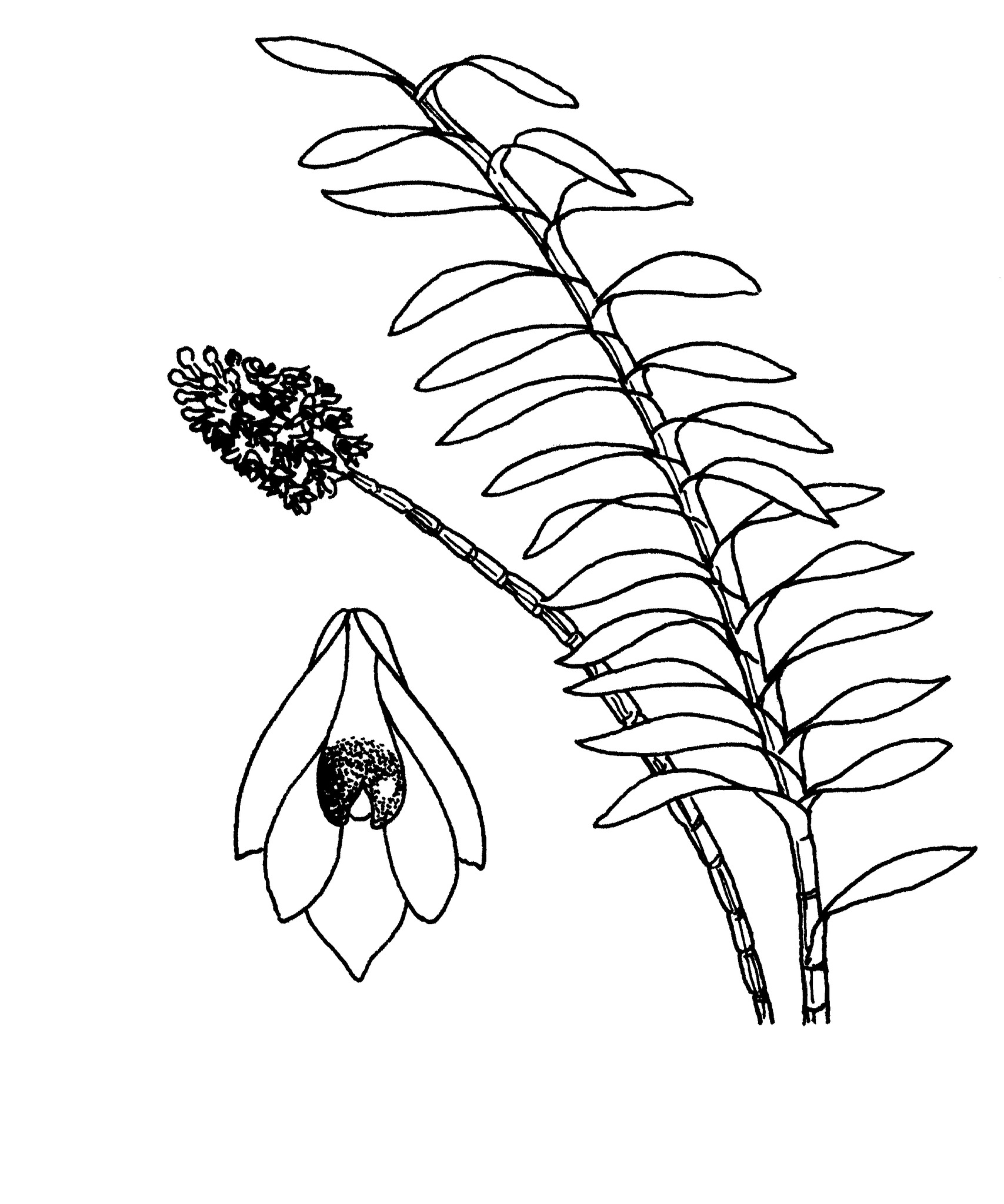
Robust epiphyte. Pseudobulbs spindle-shaped, to 1 m long, ribbed, clustered. Leaves numerous, oblong or lanceolate, to 20 cm long, to 4 cm wide, soon falling. Flowers many, to 2 cm long, dense, not opening widely, white, cream, greenish or pink. Sepals ovate to oblong, laterals shorter and broader. Petals spoon-shaped. Labellum obovate, funnel-shaped at base, margins incurved at tip, tip shiny green; spring.
Occasionally cultivated are:
D. amethystoglossum Rchb. f., which is a robust epilith with short drooping racemes of white flowers that have a purplish labellum.
D. bracteosum Rchb. f., which is a medium sized epiphyte with bracteate racemes of white, cream, pink or reddish flowers that have a yellow or orange labellum.
D. bullenianum Rchb. f., which is a robust epiphyte with short, dense racemes of bright orange-red flowers.
D. capituliflorum Rolfe, which is a medium sized epiphyte with small tight clusters of white or cream tubular flowers that have a bright green base to the labellum.
D. miyakei Schltr., which is similar to D. victoriae-reginae but the plants are often larger and the smaller flowers are purplish-red.
D. secundum (Blume) Lindl., which is a robust epiphyte with erect, often one-sided, racemes of white to purplish flowers that have a yellow or orange labellum.
D. victoriae-reginae Loher, which is a medium sized epiphyte with short racemes of violet-blue flowers that are white at the base.
New Guinea and Australia.
Source: (2005). Orchidaceae. In: . Horticultural Flora of South-eastern Australia. Volume 5. Flowering plants. Monocotyledons. The identification of garden and cultivated plants. University of New South Wales Press.
